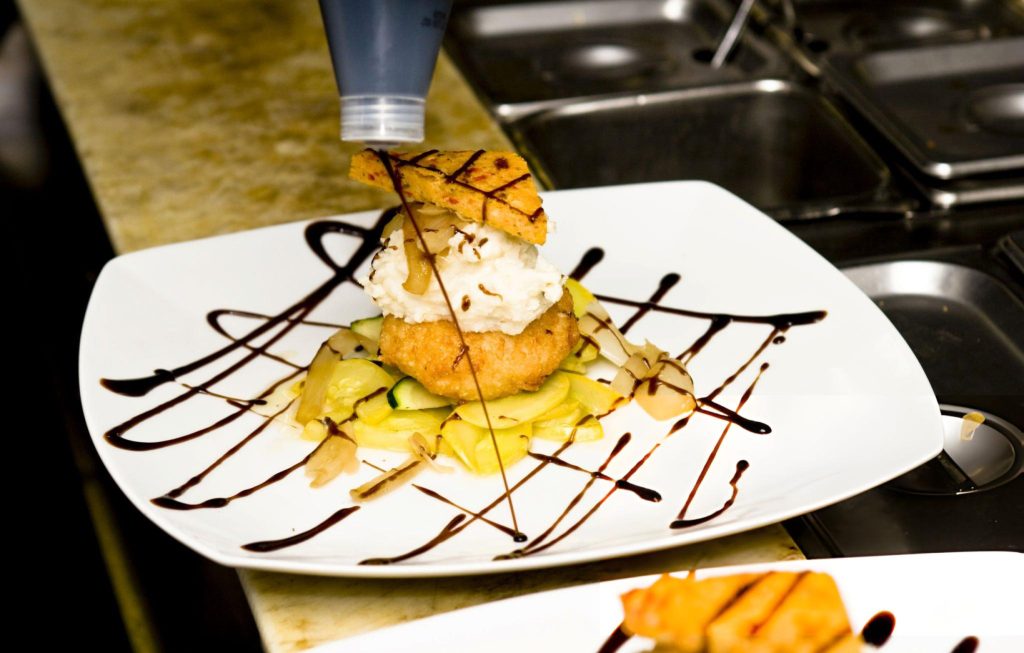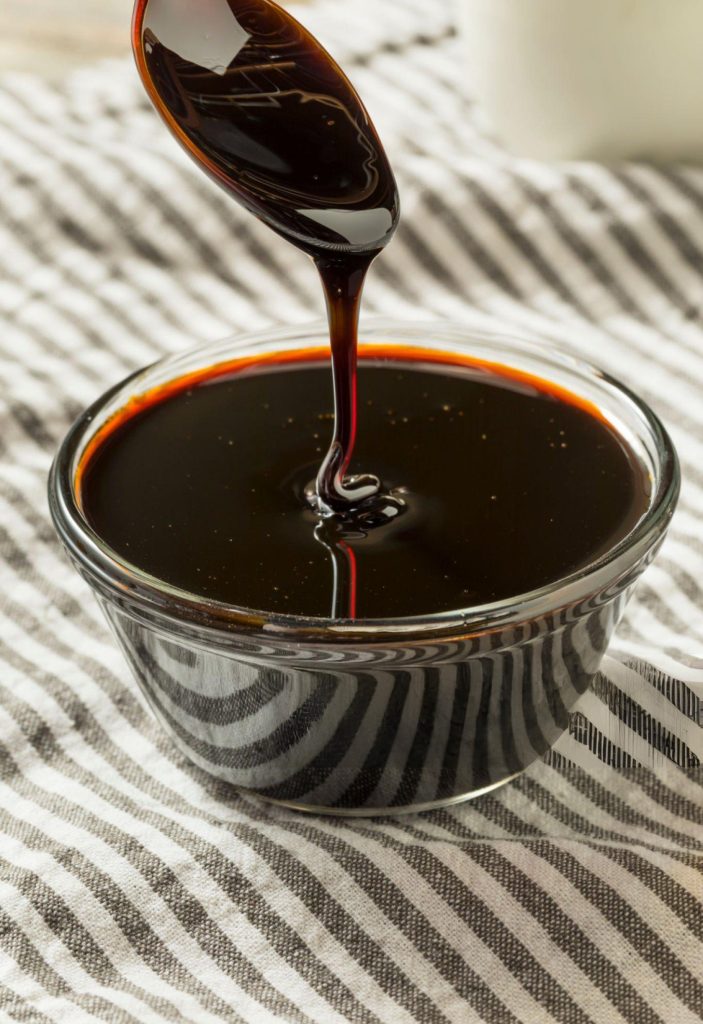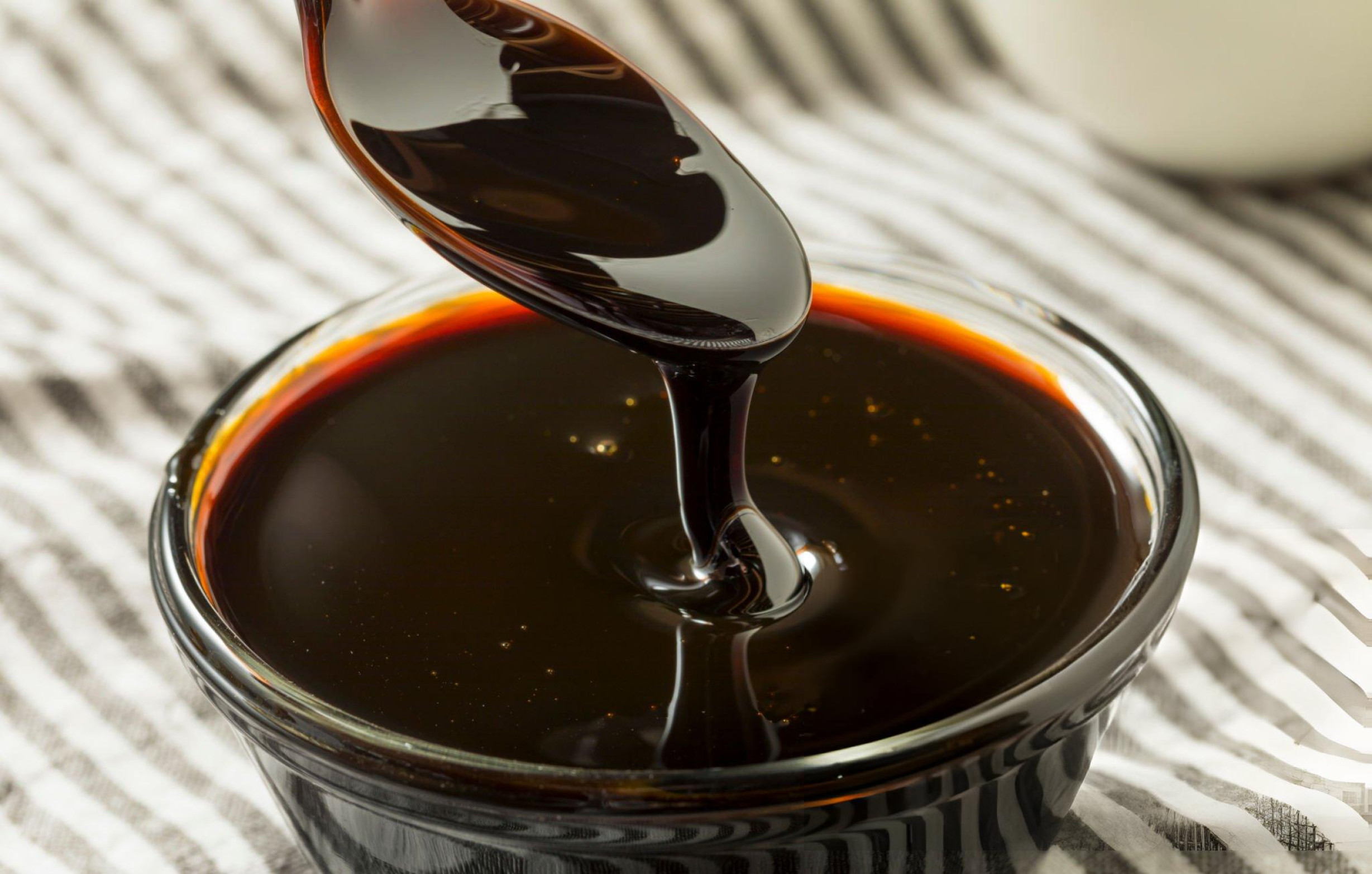Balsamic Glaze Recipe
Balsamic glaze is a versatile and flavorful condiment that can elevate a wide range of dishes, from savory to sweet. This rich, syrupy reduction of balsamic vinegar offers a balance of sweet and tangy notes that complement everything from roasted vegetables to desserts. Making balsamic glaze at home is not only easy but also allows you to control the flavor intensity and consistency, ensuring a perfect addition to your culinary creations.

Balsamic glaze is a reduction of balsamic vinegar that thickens into a syrup-like consistency as it cooks. The process intensifies the vinegar’s natural sweetness while mellowing its sharp acidity. The result is a luxurious glaze that adds depth and complexity to your dishes. Whether drizzled over grilled meats or paired with fresh strawberries, balsamic glaze is a must-have in any kitchen.
Making balsamic glaze at home is a simple process that requires just two ingredients: balsamic vinegar and, optionally, brown sugar. By preparing your glaze at home, you can avoid the additives and preservatives often found in store-bought versions. Plus, you have the flexibility to customize the sweetness and thickness to suit your taste preferences.
Ingredients and Tools Needed
When preparing balsamic glaze, choosing the right ingredients is crucial to achieving the best results. High-quality balsamic vinegar is the foundation of this recipe, as its complex flavor will shine through in the final product. If you prefer a sweeter glaze, brown sugar can be added, though this is entirely optional.
In addition to the ingredients, you’ll need a small saucepan and a spoon for stirring. A silicone spatula can also be helpful for scraping down the sides of the pan and ensuring that the vinegar reduces evenly.
Step-by-Step Instructions
Before you begin cooking, gather all your ingredients and tools. This will make the process smoother and more efficient. When selecting balsamic vinegar, opt for one that is labeled as “aceto balsamico di Modena” or “aceto balsamico tradizionale.” These varieties are known for their rich, complex flavors and are ideal for making balsamic glaze. If you’re adding sugar, measure out the desired amount and set it aside.
Pour the balsamic vinegar into a small saucepan and place it over medium heat. If you’re adding sugar, combine it with the vinegar in the saucepan right from the start. As the mixture heats up, you’ll notice the vinegar beginning to steam and small bubbles forming around the edges. This is your cue to reduce the heat to medium-low and allow the mixture to simmer gently. Stir occasionally to prevent the vinegar from sticking to the bottom of the pan and to ensure an even reduction. The vinegar will gradually thicken and reduce in volume. You’ll know it’s ready when it coats the back of a spoon, which usually takes about 20 minutes. If you’ve added sugar, the reduction process will be quicker, around 8-10 minutes.
Once the glaze has reached the desired consistency, remove the saucepan from the heat and let it cool completely. The cooling process allows the glaze to thicken further, enhancing its syrupy texture. Transfer the cooled glaze to an airtight container for storage.

Recipe Tips & Frequently Asked Questions
How to Achieve the Perfect Consistency:
To get the ideal thickness, monitor the vinegar closely as it reduces. The goal is for the glaze to coat the back of a spoon without being too runny. If you find the glaze too thick after cooling, you can thin it out by stirring in a small amount of balsamic vinegar.
Adjusting the Sweetness:
If you prefer a sweeter glaze, add brown sugar at the beginning of the reduction process. Start with a small amount and taste as you go. You can always add more sugar, but you can’t take it out once it’s dissolved.
Common Mistakes to Avoid:
One common mistake is overheating the vinegar, which can cause it to burn and become bitter. Keep the heat at medium-low and stir occasionally to prevent this. Another pitfall is reducing the glaze too much, resulting in a thick, sticky mess. Remember that the glaze will continue to thicken as it cools.
Can I Use Other Types of Vinegar for This Recipe?
While balsamic vinegar is the traditional choice, you can experiment with other types of vinegar, such as apple cider or red wine vinegar. Keep in mind that the flavor profile will change, so adjust the sugar and reduction time accordingly.
How Long Does Homemade Balsamic Glaze Last?
When stored in an airtight container in the refrigerator, homemade balsamic glaze can last for up to a month. Over time, it may thicken further, so you may need to reheat it slightly before using it.
What Should I Do If My Glaze Becomes Too Thick?
If your glaze is too thick after cooling, simply stir in a small amount of balsamic vinegar to loosen it up. Reheat gently on the stove if necessary.
What to Serve with This Recipe
Balsamic glaze is incredibly versatile and pairs well with a variety of dishes. For savory applications, try drizzling it over grilled meats like steak, chicken, or pork. It also enhances the flavors of roasted vegetables, such as Brussels sprouts, asparagus, or carrots. A splash of balsamic glaze can elevate a simple salad, adding a touch of sweetness and acidity that balances the dish.
For those with a sweet tooth, balsamic glaze can be used as a topping for desserts. It pairs beautifully with fresh berries, especially strawberries, and can also be drizzled over vanilla ice cream for a sophisticated twist. Another creative use for balsamic glaze is as a finishing touch on flatbreads or pizzas, where its tangy sweetness complements ingredients like goat cheese, figs, and prosciutto.
Storage and Reheating
To keep your homemade balsamic glaze fresh, store it in an airtight container in the refrigerator. A glass jar with a tight-fitting lid works well for this purpose. Before using the glaze, give it a good stir to reincorporate any separation that may have occurred during storage.
If the glaze thickens too much in the refrigerator, you can gently reheat it on the stove over low heat. This will help restore its pourable consistency. Be careful not to overheat the glaze, as this can cause it to become too thick or even burn.
Balsamic glaze is a simple yet elegant addition to your culinary repertoire. By making it at home, you can tailor the flavor and consistency to your liking, ensuring a perfect match for any dish. Don’t be afraid to experiment with different uses for your glaze—whether it’s a drizzle over roasted vegetables, a finishing touch on a dessert, or an unexpected ingredient in your next gourmet creation. Share your homemade balsamic glaze with friends and family, and inspire them to explore the possibilities of this delicious condiment.

Ingredients
- ½ cup brown sugar (optional)
- 2 cups high-quality balsamic vinegar
Instructions
Pour the balsamic vinegar into a small saucepan and set it over medium heat.
*If you decide to add sugar, combine the vinegar and sugar in the saucepan from the start.
Allow the mixture to reach a gentle boil, then lower the heat to medium-low, letting it simmer while stirring occasionally. Continue cooking until the liquid reduces and thickens to about ½ cup, which should take roughly 20 minutes. You’ll know it’s ready when it can coat the back of a spoon.
*If you’re using sugar, expect the reduction process to take about 8-10 minutes.
Once reduced, remove the pan from heat and let the glaze cool completely, which should take about 15 minutes, before serving.

Balsamic Glaze Recipe
Ingredients
- ½ cup brown sugar optional
- 2 cups high-quality balsamic vinegar
Instructions
- Pour the balsamic vinegar into a small saucepan and set it over medium heat.
- *If you decide to add sugar, combine the vinegar and sugar in the saucepan from the start.
- Allow the mixture to reach a gentle boil, then lower the heat to medium-low, letting it simmer while stirring occasionally. Continue cooking until the liquid reduces and thickens to about ½ cup, which should take roughly 20 minutes. You'll know it's ready when it can coat the back of a spoon.
- *If you’re using sugar, expect the reduction process to take about 8-10 minutes.
- Once reduced, remove the pan from heat and let the glaze cool completely, which should take about 15 minutes, before serving.

